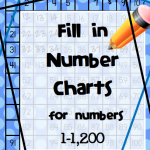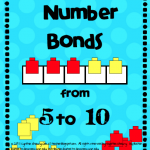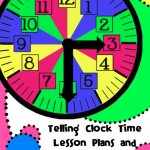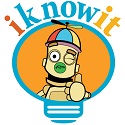5 Things to Know if Teaching Wiring with Electricity
While wading through teaching electricity, I learned a few hints that I wish I had known before setting out on this venture.
The following applies if you are teaching children to wire bulbs from Christmas light strands.
1. If you strip wire, strip it a little at a time (about 2-3 cm). This will prevent the small strands of copper from falling out from the friction.
2. After you strip the wire, twist the exposed copper ends a little at a time to prevent the small strands of copper wire from falling out. Then the copper wire will be stronger and easier to use.
3. If you allow students to use Christmas lights from the strand, it works best to just pull the bulb out completely and connect each end of the bulb wire (see small arrows above) to a Christmas light. At times, you can cut the wire with the bulbs still in the wire and they worked, but more often than not, it didn’t work to cut the wire with the bulbs still in them.
4. If you cut Christmas light wire to do wiring with Christmas lights, the thin wire will only carry about 12 volts before it overheats. I learned this from an electrician.
5. If you use LED bulbs, be aware that one end of the LED bulb will be a positive end and one end will be negative. This makes it more difficult to wire these type of bulbs. This is because you don’t know if the circuit has a bad connection or if the bulb is turned around the wrong way.
Here is one of the best classroom models the kids made below. They did one of the best wiring jobs!
Don’t Throw Out Your Old Christmas Lights!
As I have transitioned into my role as a GT (gifted and talented) teacher this year, I have found myself saving recyclables and trash of all sorts. Now, before recyclable day at home, I find myself making a separate pile for taking items to school. The recyclable man for my house gets NOTH-ING…almost :). Students have used their imagination to build furniture and other unusual items out of their recyclables. They have amazed me with their creativity!

Look at the detail in the picture below…a ceiling fan hangs from the ceiling. A piece of milk carton plastic has been cut for a “SMART board”. Little egg carton pieces make chairs.

Most recently students built a model GT classroom. One of the requirements was that the model have five pieces of furniture. One of the other requirements was that the model have at least two working lights. Some of the most impressive models had “light fixtures” built out of bottle caps and other random pieces of plastic. The models were most impressive!
Below you can barely see the lighting glowing in the background. Students have made little chairs out of bottle caps and round circle tables. Their SMART table is seen on the right corner made out of painted styrofoam.

To economically allow students to build a lit model, I had to acquire lighting from somewhere. I certainly didn’t have the funding to buy all of the students lighting–especially because it seemed that the lights were blowing out with too much voltage from the batteries. So where did I get lighting? You guessed it! I was able to acquire lighting from a parent getting rid of old Christmas lights. She got rid of at least five strands of Christmas lights. Just because some of the strands didn’t work, doesn’t mean we weren’t able to use them. We were able to pull each bulb out and use the bulbs individually.
Sometimes we were able to cut the green wire with the bulb included and have the bulbs work that way, but that didn’t work very often for us. When we pulled the bulbs out of the strand, we had the single bulbs. The single bulbs had two wires sticking out that looked like bug antennas. We were able to attach one end to the positive and one end to the negative end of a battery for them to work. Christmas light bulbs will work with 1.5 volts, so we learned not to put too many batteries with just one bulb or they blew out. Students can cut the extra green wire left on the strand to wire to the ends of the light bulbs. Then they attach them to batteries, and in our case we put light switches ($0.69 each) in the circuits.
Below one of the models is shown with the lighting glowing a bit.
Students really enjoyed this project. This did take several weeks to complete. I hope this gives you some ideas for your own students and classes.
Use This Free Resource if You are Teaching Fractions
Have you seen this great new website tool for teaching and assessing mathematics for elementary students? On iknowit There are multiple lessons included about various math topics all from the makers of Super Teacher Worksheets! One of my favorite lessons is the one about 3rd grade fractions. What I like about the fraction lesson/assessment is that it focuses on equal parts. This gives children the chance to really think about what equal parts look like. Sometimes the idea that fractions are equal parts can become a misconception to students.
There are also different types of general fraction questions such as what fraction is shaded or what fraction was taken etc.
There are questions using the written words halves and quarters instead of only the numbers. These are words that students struggle with seeing and using.
I also like that the program gives students automatic feedback to let them know if they were correct or incorrect. If students are incorrect, the program gives students an explanation to tell them why they were incorrect. The little robot is animated and jumps around each time students get a question correct. He has a different animation for each question.
You can even take a quick grade with this program because the program shows students their total score when they complete an assessment. Teachers can easily use the score for their grade book.
The best part is that it is free! FREE! Yes, absolutely FREE! (At the time of the writing, the website is free, but eventually this website will charge for membership.)
Try it out and enjoy!
Multiplication Stairs for the Kinesthetic Learner
I found these stairs in a school in which I had a professional development meeting. You have probably seen a similar idea on Pinterest of a staircase with brightly colored multiplication cards that exactly fit the stairs. I have checked into the prices to have custom cards made like those on Pinterest and the prices were well over $500. Ouch! The great thing about these stairs (pictured below) is that they look like they were made on a much cheaper budget.
You would need someone who has access to a Silhouette die cutter and a selection of the sticky vinyl to print the numbers on. In addition, you would need a ruler to mark off the placement of each number and lots of time! When I saw this, I thought the idea was fabulous, but I didn’t think that the colors were dark enough to stand out on the concrete.
If your school has used the spaces on their stairs for math facts, leave a link and/or share your experience.
Need a Critical Thinking Time Filler on the Fly? {Giveaway Time}

Giveaway organized by: Kelly Malloy (An Apple for the Teacher),
I Didn’t Think the Kids Could Make This Work, But…
I have been teaching my kids about circuits lately. They have been using the little 1.5 volt incandescent bulbs, wires with alligator clips, and D cell batteries. D cell batteries are also 1.5 volts. I had brought in every lightbulb in my house that had burned out so the kids could see all of the filaments floating around in the bottom of the bulb. I also brought in one working 40 watt incandescent bulb. I thought it would be fun for them to see if they could get the bulb to light. Because the bulb says 120 volts on the bottom, I didn’t think the students could get it to work. We had a limited number of batteries to even try to light the bulb.
I put the large light bulb in a station for free experimentation. I thought the kids had forgotten about trying to get the large bulb to light, so I put the bulb in my lamp. When they asked about trying to get the bulb to light again, I took it out of the lamp and told them they could try up to seven batteries. They tried the seven batteries and the bulb didn’t light. When they were puzzled, I asked them whey they thought it didn’t light. Showing the girls the print on the bottom of the bulb and inquiring about the voltage of the battery, they realized they needed more batteries. I explained to them that we probably didn’t have enough batteries. Their reply was, “PLEASE, PLEASE, PLEASE, can we try more batteries?!” Since they were so persistent, I let them. I expected there to be no change in the bulb.
About five minutes later, I hear the girls squeal with delight! You guessed it! They lit up the bulb! They had about 21 D batteries taped together end to end with masking tape down the length of them. By this time in class, about five or six students had joined in and were holding a section of the batteries to make sure they were completely touching end to end. One child was holding the wire from the positive to the negative end of the batteries. When they got the bulb to light a little, they wanted to add more batteries to make it brighter.
What’s even better? With a tiny bit of prompting, the kids were doing real world decimal addition/multiplication. They were counting the amount of volts they had on each battery and figuring out how much voltage they were using to power the light bulb. I am glad I gave into their pleading and never told them I didn’t think it would work :)! They will probably remember this MORE than anything I had planned to officially teach them!
Valentines Idea for Teachers!
Since I have a rather large affinity for Valentines Day, I wanted to do something special for the teachers I work with. A teacher friend and I decided to make some homemade goodies, but probably not the kind you are thinking of…
We made every teacher a peppermint lip balm with a cute Valentine label.

These are easy to make, but it is quite a messy project. To begin you need beeswax (I like pellets), coconut oil, shea butter, and Young Living peppermint essential oil.
1.Place equal parts shea butter, coconut oil and beeswax pellets in a glass jar. I start with a tablespoon of each.

I like to use an old glass jar to melt the ingredients so that I don’t have to worry about cleaning wax off of my dishes.
2. I boil water in a small pot, reduce the heat to low, and then place the glass jar in the water like a double boiler.
3. After all of the ingredients have been completely melted, I take the jar off of the heat and wait about a minute.
4. Then I put peppermint oil in the mixture. I use 15-20 drops of oil. Mix the ingredients. I just slosh the mixture around a bit in the jar to mix the oil.
5. Now, you must act fast. Have your lip balm containers already standing upright with the lids off before your mixture is melted so that way you can just pour the mixture straight into the containers from the jar.
Now a list of where I purchased my ingredients:
beeswax pellets– abundanthealth4u.com
Shea butter–abundanthealth4u.com
Coconut oil–Kroger (Wal-Mart sells this too)
Peppermint essential oil–Young Living (I use Young Living because it is safe for internal use.) (My Young Living sponsor and enroller number are 2600343.)
By the way if you need to do any cleanup, realize that you will do better by using a dry towel to wipe off excess wax. Water and the wax repel one another and do not help the cleaning process. I go through many paper towels in the clean up process.

We also made everyone cute little homemade peppermint mints in a small tin (sorry no pictures). I got the tins from Amazon. These were easier to make than I expected. I just bought a bag of xylitol from Whole Foods. All you do is melt it down (no water at all). You just put it in a small pot and stir on low temperature as it melts. Then you take it off of the heat and let it cool down just a bit for a few minutes before it turns back to a solid. Stir in the peppermint essential oil. I used 15-20 drops for a cup of xylitol. Then you place parchment paper on a baking sheet and pour the mixture onto the paper. Let it dry overnight. Then when it has hardened and is dry, just break it with your fingers into small pieces. I followed the recipe here.
























































